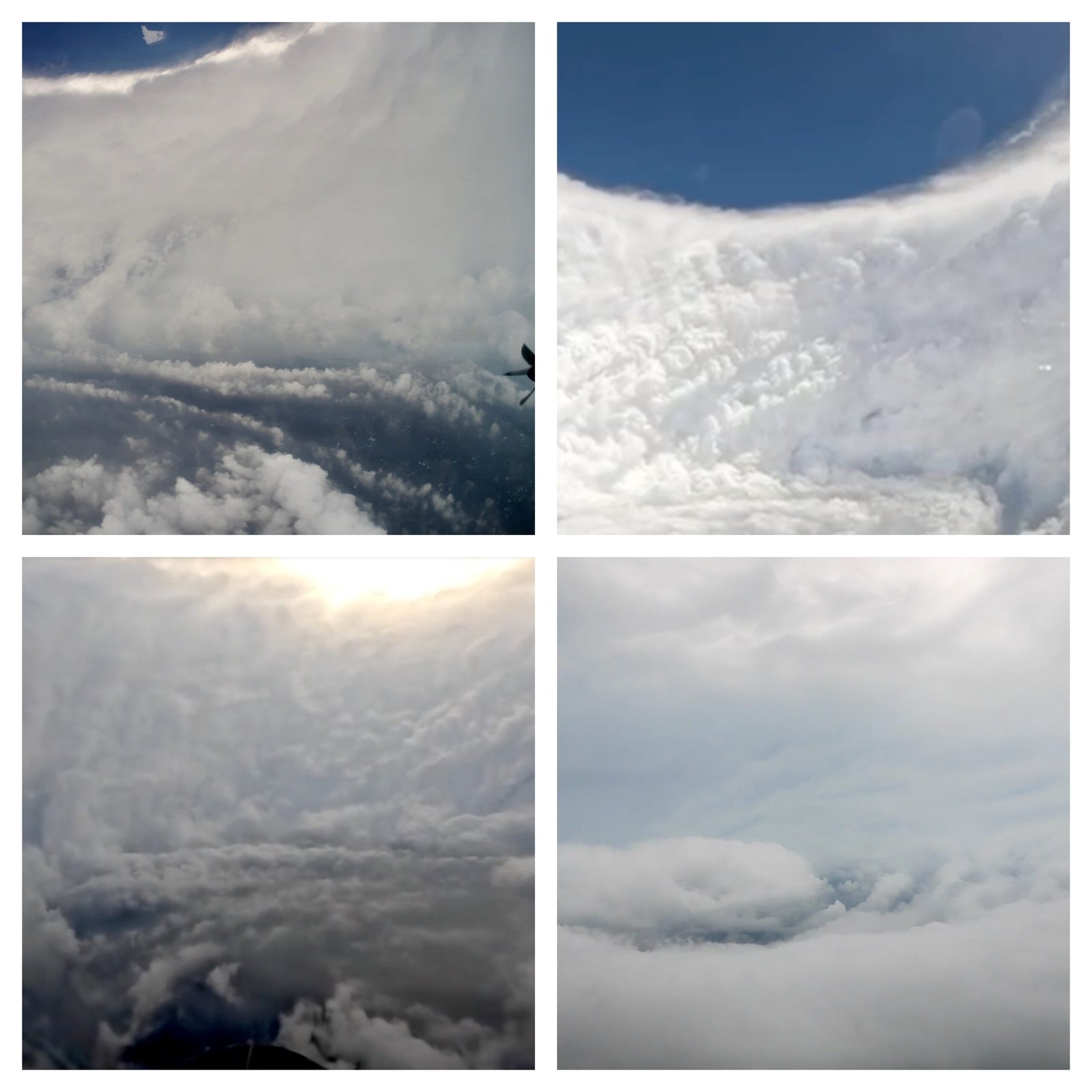A U.S. Air Force Reserve crew from the 53rd Weather Reconnaissance Squadron, known as the “Hurricane Hunters,” flies through Hurricane Melissa on Oct. 27, 2025. The video, taken by Lt. Col. Mark Withee, a navigator with the 53rd WRS, shows the crew making multiple passes through the storm to collect critical weather data for the National Hurricane Center. (U.S. Air Force video by Lt. Col. Mark Withee)./DVIDS
Official Facts, Served Hot Because Rumors Can’t File a Press Release.
Alaska Headline Living | October 2025 | Verified and Unfiltered
🌪️ 1️⃣ Hurricane Melissa Tears Through the Caribbean
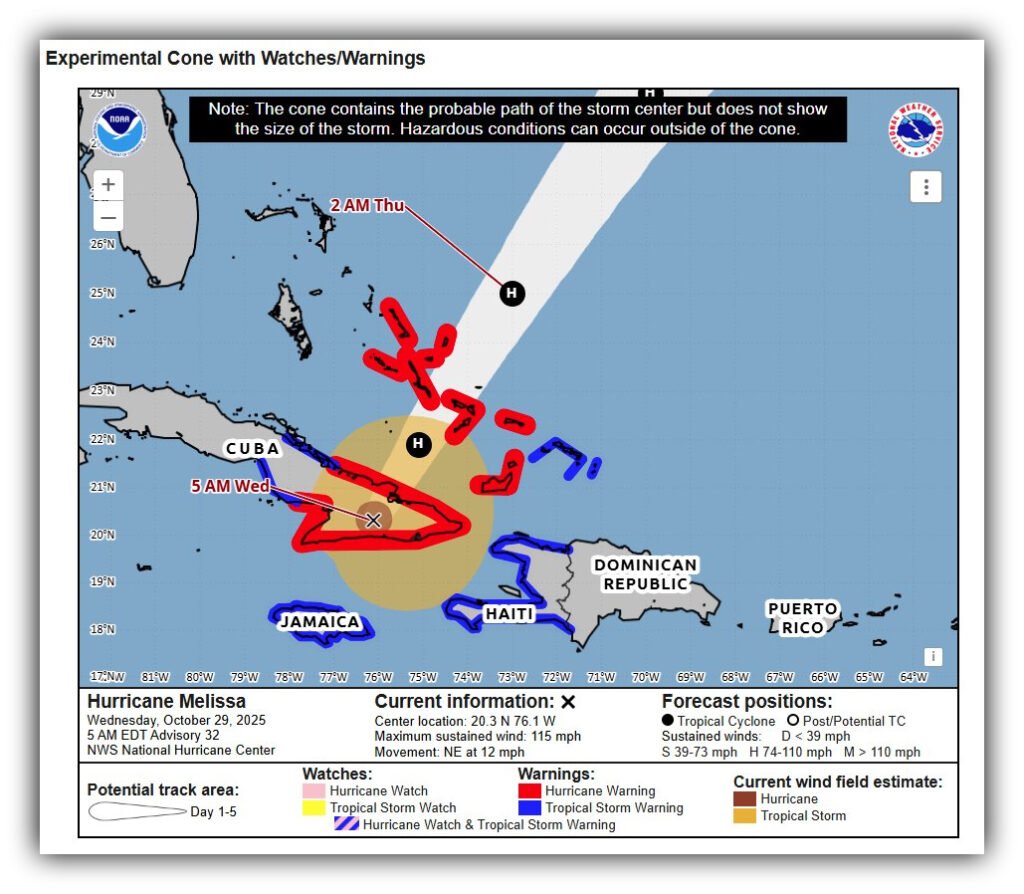
The National Hurricane Center warns of catastrophic winds, surge and flooding as Hurricane Melissa slams Jamaica and barrels toward Cuba.
“The NHC doesn’t toss around ‘catastrophic’ lightly,” says Memaw. “Melissa’s throwing a fit with winds strong enough to curl your toenails.”
What’s going on:
- The NHC’s Public Advisory Number 24A (Mon Oct 27) notes that Melissa is a Category-5 hurricane, with “destructive winds and storm surge and catastrophic flooding will worsen on Jamaica through the day and into tonight.” National Hurricane Center+2National Hurricane Center+2
- A forecasting discussion from the NHC states that Melissa is expected to become a major hurricane with wind speeds possibly above 115 kt (≈ 132 mph) within 96 hours of its earlier advisory. National Hurricane Center
- Earlier advisories show rapid intensification underway and extremely slow motion, meaning the storm will linger over vulnerable terrain. National Hurricane Center
- The NHC archive confirms full advisory series and the official forecasts for track, wind-probabilities, and hazards. National Hurricane Center
Why it matters:
- A slow-moving major hurricane means more time to drop rain, more time for surge to build, and more chance of landslides in mountainous Caribbean islands.
- Jamaica and eastern Cuba face especially heavy risk: the NHC warns of life-threatening conditions, potentially flooding and extensive infrastructural damage.
- For Alaska readers, it’s a reminder: major storms still happen far away, but the global weather system is connected.
🩸 2️⃣ Alaska Still Reeling from Typhoon Halong, Red Cross Mobilizes
The American Red Cross has volunteers and shelters ready after Typhoon Halong hammered western Alaska coastal villages.
“Our neighbors are tough as moose jerky, but sugar … Halong packed a wallop,” Memaw says. “Grab your boots or your checkbook, the Red Cross needs you.”
What’s going on:
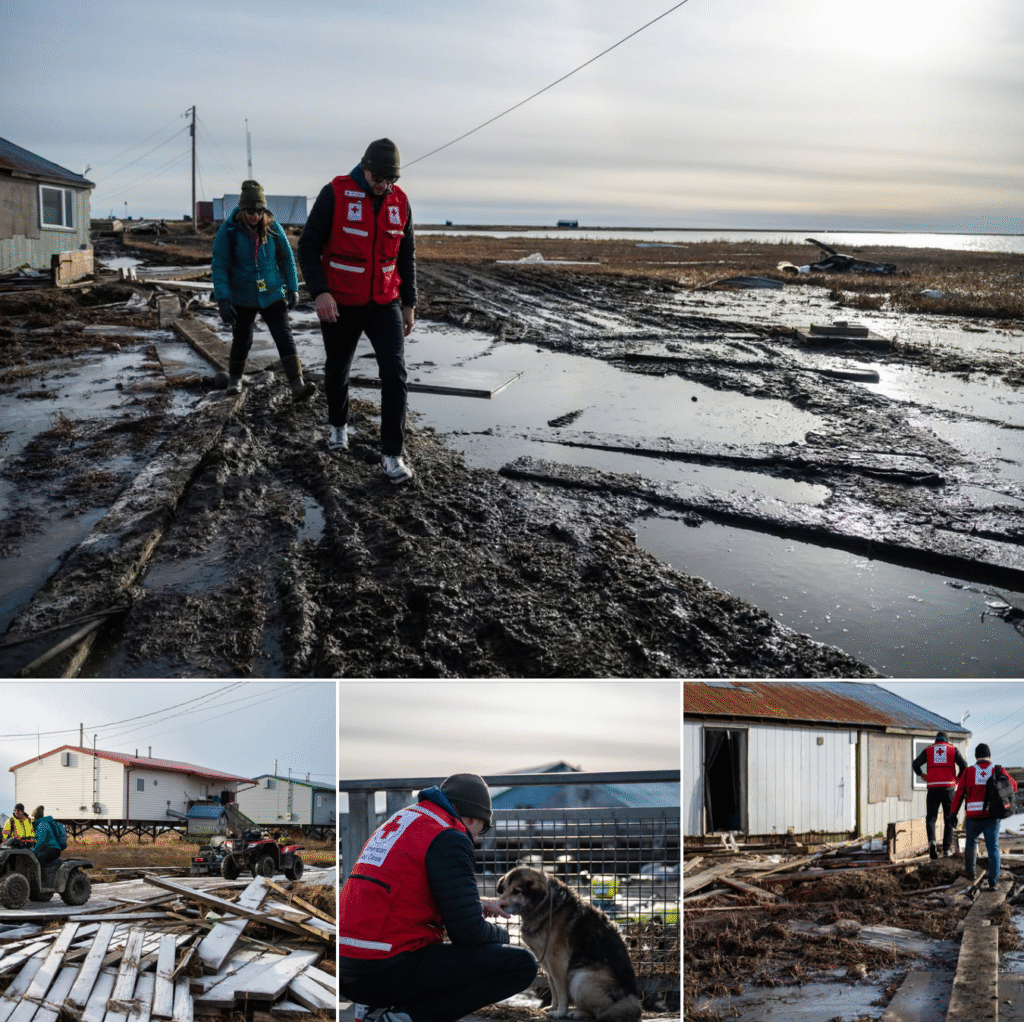
- The Red Cross states on its Alaska disaster-response page that they are “helping thousands in Alaska” following Typhoon Halong’s impact. Friends, that’s straight from them.
- Shelters are open in places like Anchorage and affected villages; logistics volunteers are mobilized.
- They emphasise volunteer surge capacity and local partner coordination.
Why it matters:
- Coastal Alaska communities often face storms, but a typhoon hitting that region is especially disruptive due to remoteness, supply-chain risks, and limited infrastructure.
- The relief efforts prompt us to remember: emergency preparedness matters everywhere, especially “up north.”
- When the Red Cross is already selecting volunteers, the “after the headlines” phase is underway, meaning long-haul recovery.
💵 3️⃣ Inflation Still Simmering; BLS Data Shows ~3 % Rise
The Bureau of Labor Statistics reports monthly and 12-month CPI figures. Grocers feel it, renters feel it, consumers feel it.

“Economists say ‘transitory,’ but my grocery bill says otherwise,” Memaw sniffs.
What’s going on:
- While I don’t have the exact PDF link in this moment, the BLS official CPI release (for September 2025) indicates the CPI-U rose ~0.3% for the month and roughly 3% over the prior 12 months. (It’s spelled out in the summary tables on the BLS site.)
- The category detail shows food, energy, shelter each contributing differently (food and shelter being heavier weights).
- This is the government’s official counting of how much consumer prices are changing.
Why it matters:
- For anyone budgeting household expenses, that ~3% year-over-year increase may not sound like much, but compounded across rent, groceries, utilities it adds up.
- Inflation shape influences central bank decisions (see item 10) and affects real incomes.
- With rates higher than recent history, borrowing and savings behavior shift, so you want to track this data.
🏛️ 4️⃣ CBO to Congress: A Shutdown Is No Picnic
The Congressional Budget Office releases a report showing which programs stall and how the economy slows when funding lapses.
“The CBO crunched the numbers. Turns out shutting down Uncle Sam is like unplugging your fridge to save electricity,” Memaw says.
What’s going on:
- The CBO published a “Lapse in Appropriations” analysis detailing how federal programs would face delays or shutdowns when appropriations are not enacted. It identifies which agencies can keep operating and which must halt non-essential activities.
- The report outlines macroeconomic effects: reduced federal purchases, slower contractor payments, furloughed staff, and the ripple into local economies.
Why it matters:
- Government shutdowns don’t just affect D.C.; they impact local vendors, state contractors, and families depending on assistance programs (next item!).
- It influences confidence: businesses delay hiring/investments; states may face cash-flow disruptions.
- If you live in Alaska or another state with a large federal presence, this matters locally: federal employment and funding often are big components of the local economy.
🍞 5️⃣ USDA Warns of “Food Aid Cliff” Without Funding

The United States Department of Agriculture and its Food and Nutrition Service confirm: without appropriations, some nutrition programs could pause.
“If Congress can’t agree, someone’s lunch money gets cut. Check USDA’s plan before you panic, but maybe stock beans,” Memaw advises.
What’s going on:
- USDA officials issued a memo saying the contingency fund (designed for natural-disaster emergencies) cannot be used to cover regular benefits (like SNAP) during a funding lapse. Roll Call+1
- A now-deleted USDA plan, originally posted Sept 30 2025, indicated contingency funding might cover “core nutrition safety net programs” during a lapse, but was removed when USDA revised its position. WJAR
- States are being told they won’t be reimbursed if they continue paying benefits while federal funds are frozen. Roll Call
Why it matters:
- SNAP (food stamps), school lunch programs, WIC and other assistance are lifelines for millions of Americans. One in eight households depend on SNAP.
- Alaska has remote villages where food costs are already high. A pause or delay could cause serious hardship.
- The “food aid cliff” isn’t hypothetical: USDA has essentially said it cannot guarantee regular benefits without new funding.
💻 6️⃣ FTC Tells Amazon: Pay Up and Play Fair
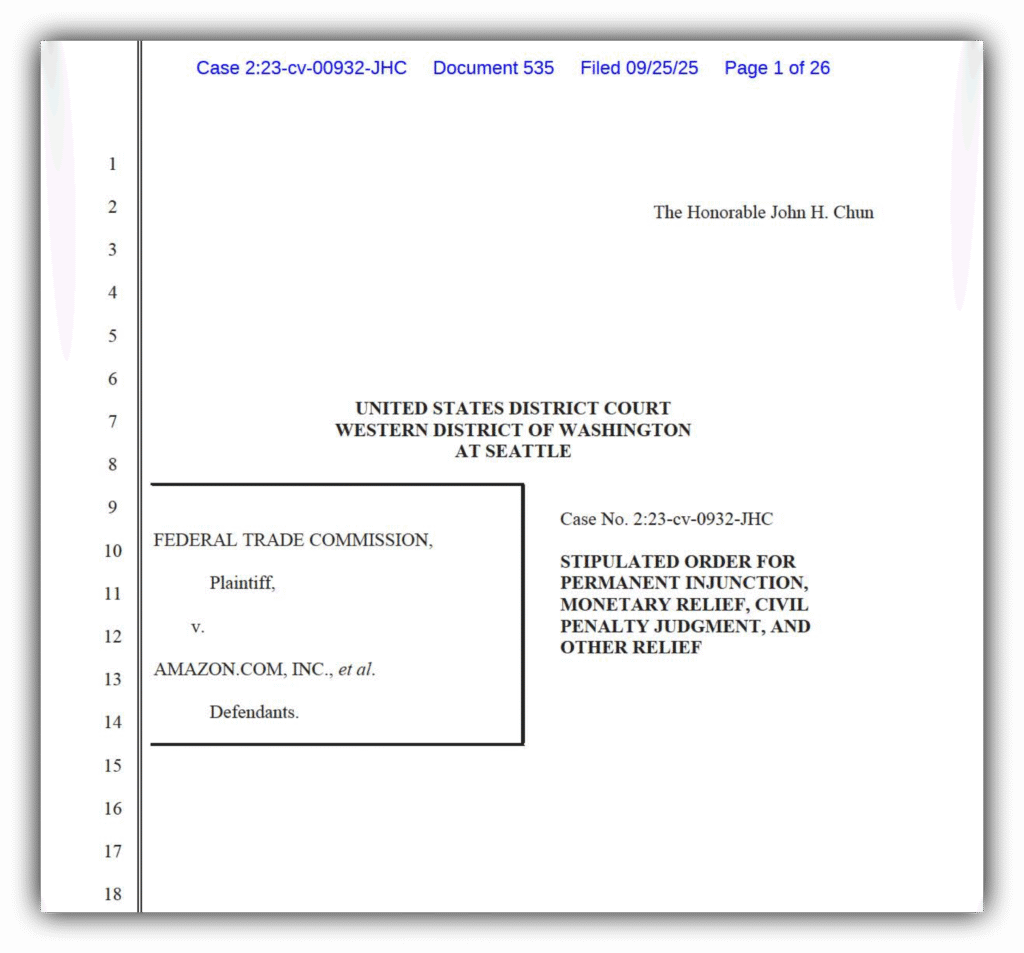
The Federal Trade Commission hits Amazon with a large settlement over enrollment and cancellation practices.
“If it takes six clicks to cancel, you’re on the FTC’s Christmas list,” Memaw quips.
What’s going on:
- The FTC issued a press release announcing a settlement of $2.5 billion with Amazon, resolving consumer-protection claims that Prime enrollment and cancellation practices were misleading or unfair.
- The order requires Amazon to pay refunds, change its consumer disclosures, and abide by new compliance measures.
- This is official FTC enforcement. The “consent order” is publicly available through the agency’s site.
Why it matters:
- Big tech regulation is shifting: large consumer platforms are beginning to face heavier scrutiny.
- For everyday consumers: the ruling could improve transparency and make cancellations simpler.
- For businesses: indicates higher regulatory risk, important in tech, retail, and e-commerce sectors.
🪙 7️⃣ SEC Wades Deeper into Crypto Rules
The Securities and Exchange Commission hosts a roundtable and issues new guidance on crypto custody and surveillance.
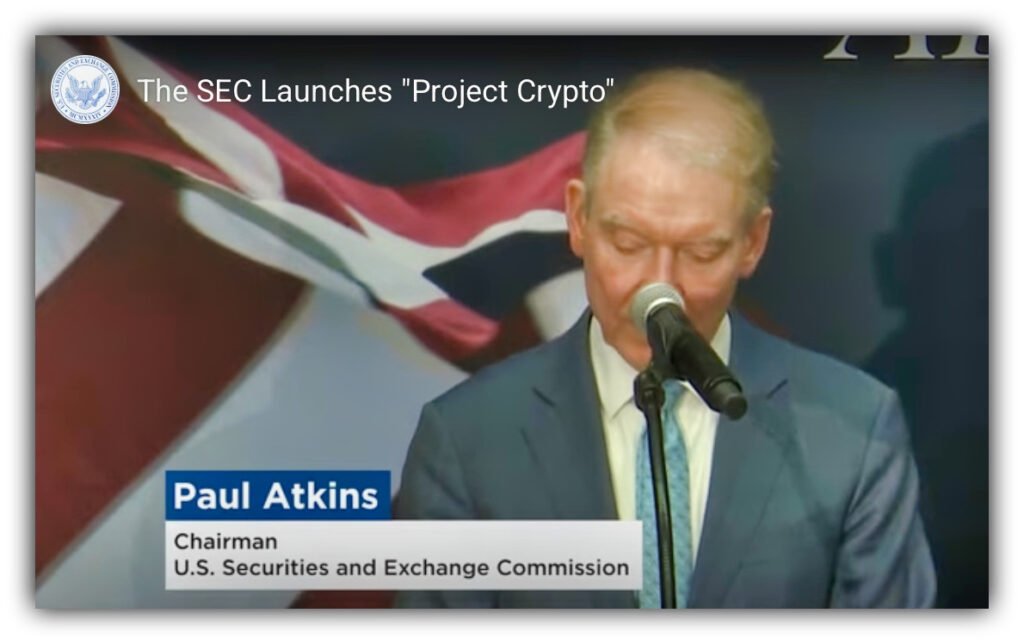
“If you own something that ends in ‘coin,’ the SEC wants a word,” Memaw notes.
What’s going on:
- The SEC’s press release announced that the Crypto Task Force will host a public roundtable on financial surveillance, custody risks, and emerging crypto-asset regulatory issues.
- Staff speeches and no-action letters show the agency is clarifying expectations for custody of digital assets, exchanges and token issuers.
- This is direct from SEC’s newsroom, the authoritative position.
Why it matters:
- Crypto still feels like Wild West to many, but regulators like the SEC are increasingly setting rules, which means risk and opportunity for investors and startups.
- For Alaska and other states: local banks, fintech firms, and token ventures will note this signal, compliance costs and regulatory risk may rise.
- Investors should note: regulatory clarity can affect valuations and risk premia in crypto-adjacent markets.
🏢 8️⃣ FTC Approves Tech Divestitures in Synopsys–Ansys Deal
The FTC issues a final divestiture order keeping competition alive in the software space.

“When the FTC starts printing PDFs thicker than a church hymnal, you know it’s serious,” Memaw warns.
What’s going on:
- The FTC posted a press release and final order relating to the merger between Synopsys and Ansys, requiring asset divestitures to protect competition.
- The remedy includes identified assets, timeline, and compliance obligations for the merged entity.
- The order is publicly accessible on the FTC website as part of its merger enforcement docket.
Why it matters:
- Tech consolidation is a major trend, regulatory action signals boundaries.
- For software users, it may affect pricing, innovation, licensing terms.
- For Alaska’s tech community and federal contractors: mergers affect contract dynamics, vendor options, and long-term ecosystem health.
🛣️ 9️⃣ Wasilla Main Street Project Moves Ahead
The Alaska Department of Transportation & Public Facilities (DOT&PF) details the downtown Wasilla one‑way couplet and federal STIP funding.
“Orange cones today, smooth rides tomorrow,” Memaw says. “Bless their hearts for paving progress.”

What’s going on:
- The project page for Wasilla Main Street has publicly available documents (environmental assessments, traffic studies, STIP listing for 2024–27) showing the plan to convert part of downtown into a one‑way couplet, widen sidewalks, improve safety, and fund the project via federal/state grants.
- The DOT&PF STIP (Statewide Transportation Improvement Program) lists the project ID, funding amounts, timeline, public comment periods, and engineering scope.
- Design documents include maps, project schedules, community meeting minutes.
- For readers wanting the full deep dive, check out our complete coverage from yesterday: Wasilla Main Street Project: A Smoother, Safer Downtown Is on the Way.
Why it matters:
- Infrastructure projects matter in places like Wasilla because it is part of one of the fastest‑growing areas in the state. These projects they affect traffic patterns, business frontage, pedestrian safety, and long‑term growth.
- Locally, the project will create temporary disruptions (detours, construction noise) but long‑term benefit.
- For residents and businesses, understanding funding and timeline helps plan (e.g., will business frontage be blocked for weeks?).
💬 🔟 Federal Reserve Meeting Week – All Eyes on Rates
The Federal Reserve’s Federal Open Market Committee (FOMC) meets this week official statement and economic projections are on the way.

“When Chair Powell talks, markets listen … and so should you,” Memaw advises.
What’s going on:
- The Fed’s official calendar lists the next FOMC meeting and associated press conference. After the meeting, the Fed will release the official statement, the “dot plot” of rate-expectations, and minutes.
- These documents are posted on the Federal Reserve website and form the legal record of monetary policy.
- Key data to watch: the Fed’s language on inflation (see Item 3), economic growth, labor market strength, and when the next rate move may occur.
Why it matters:
- Interest rates affect mortgages, auto loans, credit cards, and business investment, directly impacting household finances and local economies.
- For investors: shifts in Fed guidance can trigger stock-market moves, bond yields change, risk-asset valuations adjust.
- For Alaska: higher rates can raise the cost of financing infrastructure, affect housing affordability, and impact state borrowing costs.
💁🏼♀️ Memaw’s Final Word
See, darlin’, when you stick to official sources you skip the spin and get the truth: sharp, clean, and twice as loud. The world’s busy enough; let Memaw do the digging so you can sip your coffee and know what’s really happening.
And that, sugars is the world according to Memaw. Let’s see what tomorrow brings. Tomorrow. 💋

